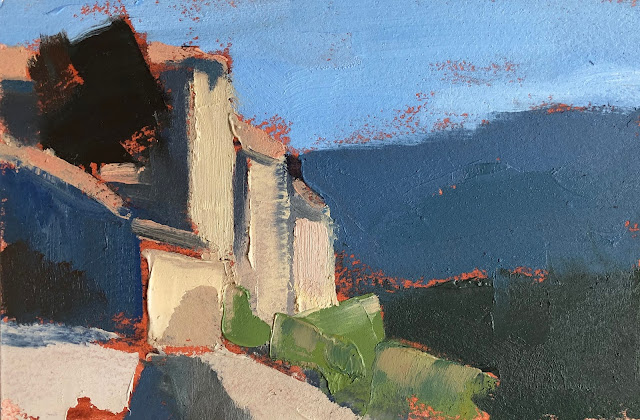During the quiet of the pandemic, when so many plans have been cancelled, I've had the luxury of time to experiment in the studio. When I want to try new things, I often start small.
The problems of composition, color and value are the same, whether you are painting a big picture or a small one. But when working on a small scale, you can complete more paintings in less time. That means that you can learn more! As a bonus, when you experience the inevitable failures, you have not wasted yards and yards of expensive linen.
I am now offering a selection of my best small works for sale. I call them "MINI, but MIGHTY." They are Mighty because a small painting can have a big impact. And the options for placing them in your home are limitless--filling that empty spot on your wall, completing a bookcase arrangement, highlighting a tabletop arrangement--you name it.
"Ménerbes", 4 x 6 inches, (c) Lesley Powell 2020
The MINIs are priced at $100 or less. You can check them out on my website here. They speak of the joy of discovery, and the promise of new things to come. Thanks for taking a look!











